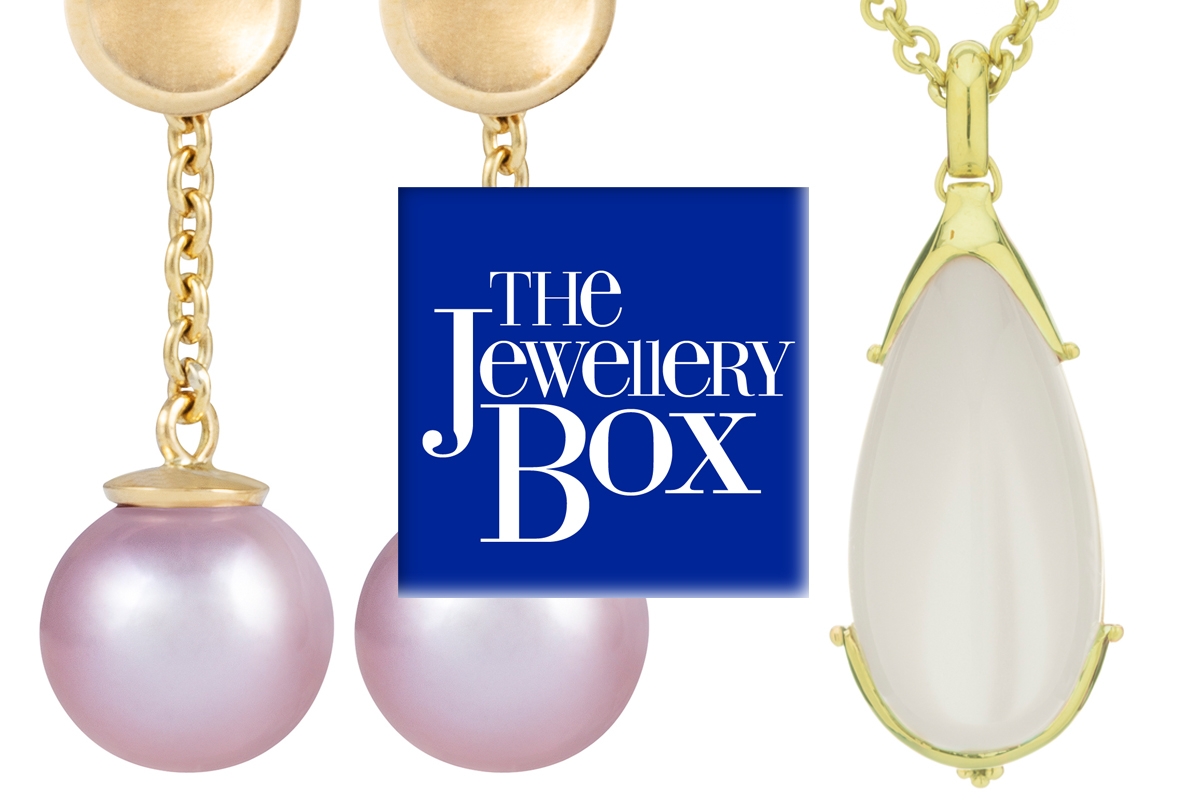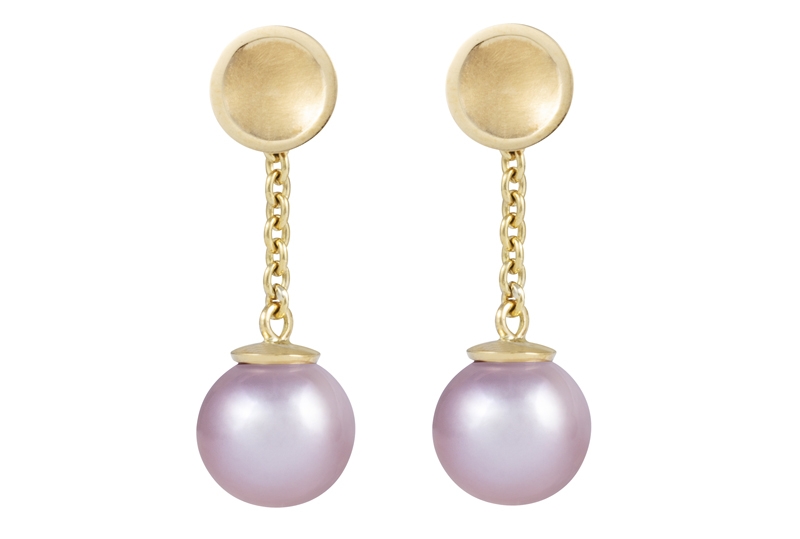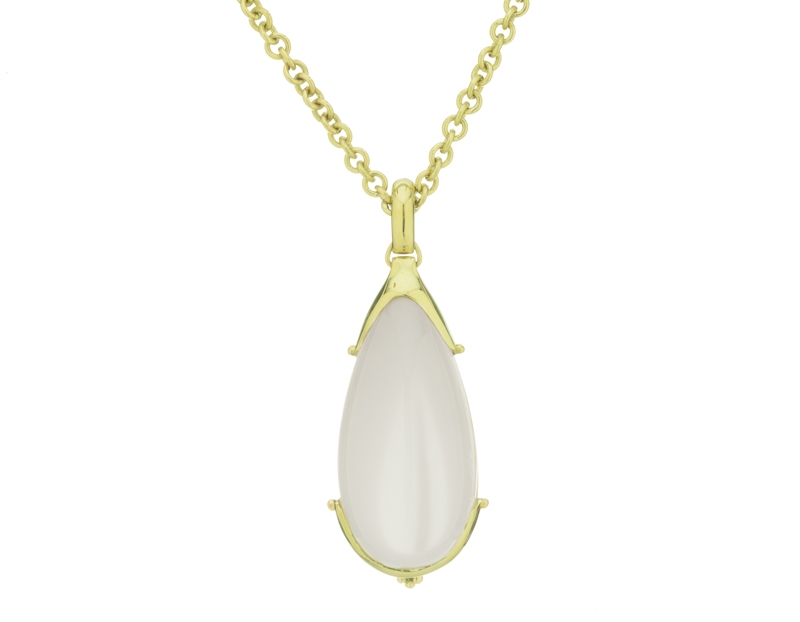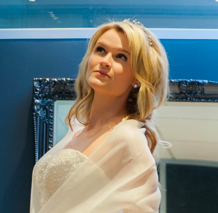
If June is the month of your birth, the pearl is your stone
Don't give that which is holy to the dogs, neither throw your pearls before the pigs, lest perhaps they trample them under their feet, and turn and tear you to pieces.
— The Gospel According to Matthew, 7:6
While writing this article under COVID lockdown I’ve been amused by the unscheduled visit of an itinerant pig. Abandoned as a result of a divorce, not his divorce, but that of his erstwhile owners, Pork Chop has become a local Facebook poster pig and amusement: spot the porcine. Yes, it’s come to that. Ostensibly well-behaved and friendly, he turned out to be quite pig-headed and not one to listen to reason. I was not about to toss my pearls of wisdom before him. (Dr. Fauci: “Don’t even get me started…”).
Pearl is now the most oft-cited birthstone for June. But, historically, that month was variously assigned emerald, agate, chalcedony, turquoise and cat’s eye. But now it’s pearl with the alternatives of alexandrite and moonstone.
One of the few organic beauties admitted into the gem pantheon, pearl has long been revered. Before being readily accessible to consumers in this last century with the advent of cultivation, pearls had been symbols of wealth for thousands of years. The first mention of them was in the recordings of a Chinese historian in 2206 BC. All the early western literati waxed poetic about pearls: Pausanias, Strabo, Cicero, Ovid, Virgil, Pliny, and Horace. But let Pausanias’ wisdom be trampled by hog hooves and hambones: For pearls are dissolved by vinegar, while diamonds, the hardest of stones, are melted by the blood of the he-goat. Kids, don’t try that at home.
Speaking of pearls and vinegar, here’s another yarn told by Pliny about Antony and Cleopatra. After days of sumptuous feting of Antony, Cleopatra began to pout. She was, Pliny wrote, “…inflated with vanity and disdainful arrogance, affected to treat all this sumptuousness and all these vast preparations with the greatest contempt.”
“What gives?” says Antony. “What possibly could be added to such extraordinary magnificence?”
To which she scoffed that she could expend ten million sesterces (in today’s dollars, a whack of money) in one night’s entertainment. Wager on, the next night they returned for another extravagant meal, though no better than his usual repast.
“Ha! That ‘twas but a trifling m’dear,” replied Cleopatra. “I alone will consume ten million sesterces.” Immediately a vessel of vinegar is placed before her, she pulls from her ear the largest pearl ever to be seen in the world, drops it in the vinegar, it dissolves immediately and she quaffs it down.
The only moral to be found in that story is that ego has no bounds.

Historically, natural pearls were found in the Persian Gulf, in the waters around Ceylon (Sri Lanka), and the freshwaters of China and Europe. Closer to home, pearls were found in the burial grounds of an aboriginal culture that flourished from 200 BC to 500 AD in what is now Ohio. Later, with the discovery of the New World, Venezuela and Panama became major suppliers to the courts of Europe.
Major indeed. The most important pearl, nay, one of the most important gems of history, is the exquisite La Peregrina that was found off the coast of Panama in 1576. For a natural pearl it is very large: it measures 25.5 x 17.9 mm and weighs 202.24 grains, a pearl term that equals 50.56 ct. (The Dudley is the largest pearl at 67.70 ct). La Peregrina hangs from a silver bail with old mine-cut and rose-cut diamonds (added in the early 19th century) and, in 1972, it was further enhanced by a diamond, ruby and natural pearl pendant suspended from a cultured pearl necklace created by Cartier.
For almost 500 years this perfectly pear-shaped pearl made its peregrination through the hands of kings, empresses and Hollywood royalty. It was bought by Philip II of Spain in 1582 and was one of the country’s most important crown jewels. It passed through the hands of eight Spanish kings over two centuries and was painted on the bodice of more than one queen by artists including Diego Velázquez. In 1808 it came into the possession of Joseph Bonaparte, the elder brother of Napoleon, when he was installed as King of Spain. The beautiful spoils of war.
And the spoils of love too. In 1969 Richard Burton bid US $37,000 at auction for La Peregrina for his already-well-bejewelled wife Elizabeth Taylor. (Not the first time I’ve noted Liz’s treasure trove). It was Elizabeth who commissioned Cartier to enhance the pearl pendant.
Five centuries of royal care and La Peregrina almost met its demise in the mouth of a puppy. While in the Burton’s suite at Ceasar’s Palace, near Las Vegas, the pearl went missing. After many minutes of anguish and surreptitiously looking for the pearl – she didn’t dare tell Burton – Elizabeth saw their puppy chewing on a ‘bone’. "Wait a minute, we don't give our dogs … bones!” she later wrote, “…I just casually opened the puppy's mouth and inside his mouth was the most perfect pearl in the world. It was – thank God – not scratched.”
After she died, La Peregrina again went to auction in 2011 at Christie’s in New York together with the rest of her collection. It was the most successful single-owner jewellery auction in history and La Peregrina sold for USD $11,842,500, more than five times its low estimate. If you find those prices off-putting, know that a portion of the proceeds went to The Elizabeth Taylor Aids Foundation.
Don’t dare think that Alexandrite is a second fiddle gem. One of the rarest of gems, it is the colour-changing variety of the gem species chrysoberyl. Coloured by the element chromium, the colour change is due to the gemological curiosity of how the gem absorbs spectral light. Alexandrite’s absorption is closely balanced between red and green and as such it can be influenced by the type of lighting. The most prized are those that are vivid green to bluish green in daylight or fluorescent light and intense red to purplish red in incandescent light. Emerald by day, ruby by night, is the saying…
Discovered in the Ural Mountains of Russia in the early 1830s just as young Alexander II was coming of age. Not only was a gift of the new gem given to the boy on his sixteenth birthday, in 1834, the new discovery was named for him. Appropriately, the red and green mirrored the country’s national colours. The spectacular mines of the Ural Mountains are pretty much mined-out. Nowadays alexandrite is unearthed in Brazil, Sri Lanka and East Africa.

Not finished yet June baby. You also get moonstone to round out your choice of birthstone. In India it was believed be solidified moonlight – there’s a poetic image – and believed to bring good fortune. It is the gem of lovers, said to arouse tender passion and foretell the future of the relationship (that could be risky). Directions: place in mouth during full moon.
Adularescence, the phenomenon moonstone is famous for, is the billowing, glowing, moonlight sheen created by light scattering off the stacked lamellar crystal makeup of the gem. The classic body colour of clear white with a blue sheen is sheer elegance. But moonstone comes in colours you’ve never heard of, let alone seen. I have at the boutique right now moonstone in charcoal grey, orange, mocha and green, all of them humming with adularescence.
Even the pigs would pay attention to all that.
Pamela Coulston is a certified gemologist and owner of Disegno Fine Jewellery
Visit Disegno Fine Jewellery in Ottawa's ByWard Market or shop online













